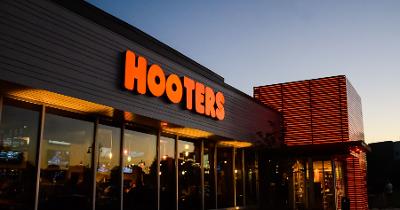Hooters, the iconic American chain famous for its chicken wings and distinctive waitstaff, is reportedly on the brink of filing for bankruptcy. The looming “Hooters bankruptcies” news comes amid a broader trend of financial difficulties faced by major restaurant chains, which have been forced to explore bankruptcy proceedings as a means of restructuring and survival. This shift is becoming more common in an industry that has been grappling with changing consumer preferences, increasing operational costs, and declining sales.
The Current State of Hooters
Financial Struggles
Hooters has struggled with declining revenue and sales in recent years, which has led to the closure of around 40 underperforming locations across the U.S. in 2024. This move was made in an attempt to mitigate ongoing financial losses. The brand, once a staple of American dining, has been unable to adjust to the rapid shifts in the restaurant industry, where consumer demand is now focused more on quick-service and fast-casual dining rather than traditional bar-and-grill formats.
Debt and Downgrades
The restaurant chain holds around $300 million in asset-backed bonds issued in 2021, which are secured by its assets such as branding rights and franchise fees. These bonds have been downgraded by the Kroll Bond Rating Agency due to Hooters’ declining revenue, which raises concerns over the company’s ability to manage its debts effectively. These financial challenges have added pressure as the company considers bankruptcy proceedings.
Steps Towards Bankruptcy
Legal Counsel and Preparations
In response to its financial struggles, Hooters has enlisted the law firm Ropes & Gray to assist with preparations for a bankruptcy filing. The company is expected to file for bankruptcy in the coming months, with plans to restructure its operations in bankruptcy court. This process would allow Hooters to reorganize its business and potentially emerge stronger, with a more streamlined business model focused on cutting losses and revitalizing its brand.
Restructuring Efforts
As part of its bankruptcy plans, Hooters is working closely with its creditors to restructure its financial obligations. These restructuring efforts aim to ease the burden of its debts and help the company survive in a competitive and increasingly challenging industry.
Industry Context
The restaurant industry as a whole has been facing significant headwinds. Rising costs, including labor and food prices, combined with the changing preferences of consumers, have caused several restaurant chains to face financial difficulty. Chains like Red Lobster, TGI Fridays, and others have similarly sought bankruptcy protection as a way to manage debts and revive their brands.
Despite these challenges, some competitors, such as Twin Peaks, have been expanding their operations, capitalizing on the demand for a similar bar-and-grill experience but with a more modern and attractive business model. This has further strained Hooters, which has struggled to keep up with its competition in a rapidly evolving market.
The Potential Impact of Hooters Bankruptcies
If Hooters does proceed with bankruptcy, it will join a growing list of well-known restaurant brands that have turned to bankruptcy courts in an attempt to survive. While bankruptcy could lead to further closures and operational changes, it could also offer the company an opportunity to rethink its strategy. Streamlining operations, refining its menu offerings, and rebranding may help Hooters regain market relevance and strengthen its position moving forward.
For Hooters fans and the broader restaurant industry, the outcome of these bankruptcy proceedings will be closely watched as it could offer insights into how similar brands can survive in the face of shifting market conditions.
Conclusion
Hooters’ potential bankruptcy highlights the financial struggles many traditional restaurant chains face in a rapidly changing marketplace. As it navigates bankruptcy proceedings, the company’s efforts to restructure and reposition itself will determine whether it can remain a player in the competitive restaurant industry or become another casualty of changing consumer tastes and economic pressures.
